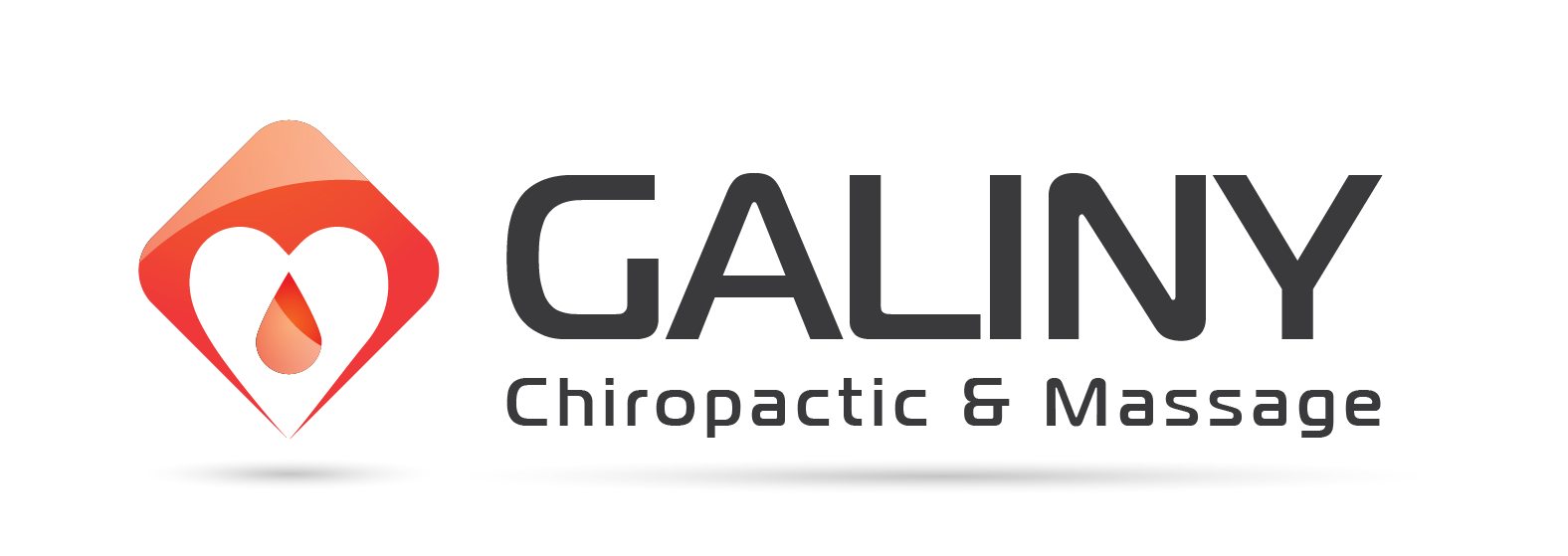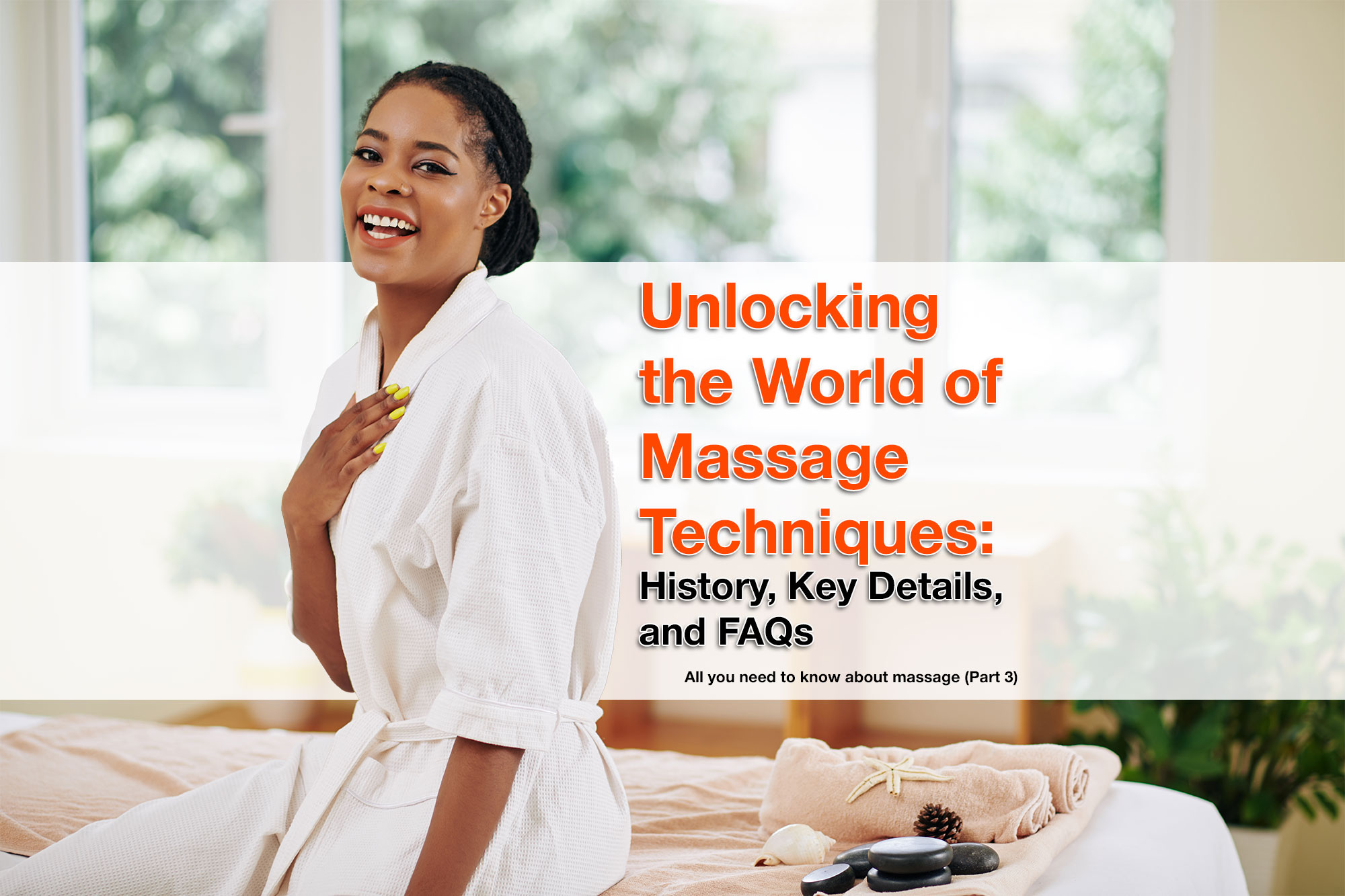Unlocking the World of Massage Techniques: Part 3
All you need to know about massage (Part 3)
Welcome to the final leg of our journey through the world of massage techniques, where we unveil the remaining five methods that round out this diverse landscape of relaxation and healing.
In the first two parts of our exploration, we've journeyed through the origins and intricacies of ten remarkable massage techniques, each with its own unique history, key details, and answers to common questions. Now, we'll conclude our tour by delving into the final five methods, each offering a distinctive approach to enhancing your well-being.
Prepare to immerse yourself in the world of neuromuscular therapy, lymphatic drainage massage, Rolfing (Structural Integration), Ashiatsu massage, and craniosacral therapy. As we uncover the fascinating histories, key details, and expert insights behind these techniques, you'll gain a deeper understanding of their potential benefits and how they can address specific health concerns.
So, join us for this final chapter of our exploration, as we shed light on these lesser-known yet highly effective massage therapies. Whether you're seeking relief from chronic pain, relaxation, or a holistic approach to wellness, the world of massage techniques offers an array of options to enrich your life.
Let's continue our journey and unlock the secrets of these five unique and transformative massage methods.
11. Neuromuscular Therapy
History: Neuromuscular therapy developed in the 1930s and has since evolved to become a widely practiced technique.
Key Details: It targets specific areas of muscle tension by applying pressure to trigger points. It can be effective for chronic pain conditions and muscle imbalances.
Common Questions:
- Q1: How does neuromuscular therapy differ from trigger point therapy?
- A1: Neuromuscular therapy often involves a more comprehensive approach, addressing not only trigger points but also muscle imbalances and postural issues.
- Q2: What conditions can benefit from this therapy?
- A2: Neuromuscular therapy can help with conditions like lower back pain, muscle spasms, and postural problems.
- Q3: Is it painful during the session?
- A3: Some discomfort may be felt, but therapists work within your pain tolerance.
- Q4: How long do the effects last?
- A4: The duration of relief varies but can be significant with regular sessions.
- Q5: Can I do self-neuromuscular therapy?
- A5: Self-massage techniques may help, but professional treatment is often more effective.
12. Lymphatic Drainage Massage
History: Lymphatic drainage massage has its roots in manual lymphatic drainage techniques developed in the early 20th century.
Key Details: This gentle technique stimulates the lymphatic system to eliminate toxins, reduce swelling, and promote detoxification.
Common Questions:
- Q1: How does lymphatic drainage massage work?
- A1: It uses light pressure and rhythmic movements to encourage lymph flow, aiding in detoxification and reducing swelling.
- Q2: Can it help with immune system support?
- A2: Yes, improved lymphatic flow can enhance the immune system's functioning.
- Q3: Is it suitable for post-surgery recovery?
- A3: Yes, lymphatic drainage massage is often used for post-surgery healing to reduce swelling and inflammation.
- Q4: How many sessions are typically needed?
- A4: The number of sessions varies based on individual needs, but multiple sessions may be recommended for maximum benefit.
- Q5: Are there any contraindications for lymphatic drainage massage?
- A5: People with certain medical conditions, like congestive heart failure, should consult with their healthcare provider before undergoing this massage.
13. Rolfing (Structural Integration)
History: Developed by Dr. Ida Rolf in the mid-20th century, Rolfing aims to improve posture and overall well-being.
Key Details: It involves a series of sessions focused on realigning the body's fascia and structure to improve posture and alleviate chronic pain.
Common Questions:
- Q1: How does Rolfing differ from other massage techniques?
- A1: Rolfing is unique in its focus on structural integration and long-term postural improvements.
- Q2: Is it painful?
- A2: Some discomfort may be experienced during the sessions as the therapist works on fascial restrictions, but it's generally well-tolerated.
- Q3: How long do the effects of Rolfing last?
- A3: The effects can be long-lasting, especially with maintenance sessions and proper self-care.
- Q4: How many sessions are typically needed?
- A4: A typical Rolfing series consists of 10 sessions, but the number may vary based on individual needs.
- Q5: Can Rolfing help with postural issues?
- A5: Yes, Rolfing is known for its ability to improve posture and alleviate related discomfort.
14. Ashiatsu Massage
History: Ashiatsu, or "barefoot massage," has ancient roots in Asia and has gained recognition in modern times.
Key Details: Practitioners use their feet to apply deep, broad pressure. It's especially effective for deep tissue work and muscle tension relief.
Common Questions:
- Q1: Is Ashiatsu massage painful?
- A1: While it involves deep pressure, many find it to be a comfortable and effective form of deep tissue massage.
- Q2: How does it differ from traditional massage?
- A2: The use of feet allows therapists to apply broader pressure and access deeper muscle layers.
- Q3: Is it suitable for everyone?
- A3: Ashiatsu can be adapted to suit various individuals, but it may not be suitable for those with certain health conditions.
- Q4: What should I wear during an Ashiatsu massage?
- A4: Comfortable, loose-fitting clothing is recommended.
- Q5: Are there any contraindications?
- A5: Individuals with certain medical conditions or injuries should consult with a therapist before receiving Ashiatsu.
15. Craniosacral Therapy
History: Craniosacral therapy has evolved from osteopathy and gained popularity in the 20th century.
Key Details: This gentle technique focuses on the craniosacral system, including the brain and spinal cord, to reduce stress, relieve headaches, and improve nervous system function.
Common Questions:
- Q1: How does craniosacral therapy work?
- A1: Therapists use light touch to release restrictions in the craniosacral system, promoting relaxation and balance.
- Q2: Can it help with migraine relief?
- A2: Yes, craniosacral therapy has been reported to help reduce the frequency and intensity of migraines.
- Q3: Is it suitable for children?
- A3: Yes, it's safe for children and may benefit conditions like ADHD and developmental issues.
- Q4: What should I expect during a session?
- A4: Sessions typically involve lying fully clothed while the therapist uses gentle touch and palpation.
- Q5: Are there any contraindications for craniosacral therapy?
- A5: It's generally safe, but individuals with certain medical conditions should inform their therapist.
In conclusion, the world of massage techniques offers a diverse range of options to address various physical and mental health needs. Each technique has a unique history, set of key details, and addresses common questions to help individuals make informed choices about their massage therapy experience. Whether you seek relaxation, pain relief, or improved well-being, there's a massage technique that may be the perfect fit for you.
Advertising
Introducing Galiny Accident Recovery Center
 When it comes to recovering from car accident injuries and restoring your well-being, Galiny Accident Recovery Center stands as a trusted and dedicated resource. Located in Federal Way and Kent, Washington, our center specializes in providing comprehensive chiropractic and massage therapies tailored specifically to car accident victims.
When it comes to recovering from car accident injuries and restoring your well-being, Galiny Accident Recovery Center stands as a trusted and dedicated resource. Located in Federal Way and Kent, Washington, our center specializes in providing comprehensive chiropractic and massage therapies tailored specifically to car accident victims.
At Galiny Accident Recovery Center, we understand the unique challenges faced by those who have been in accidents. Our experienced team of chiropractors and massage therapists work diligently to create personalized treatment plans that address your specific injuries and promote effective healing. With a focus on non-invasive and drug-free approaches, we strive to alleviate pain, restore mobility, and enhance your overall quality of life.
By choosing Galiny Accident Recovery Center, you gain access to a range of therapeutic modalities, including chiropractic adjustments, targeted massage techniques, rehabilitative exercises, and ergonomic recommendations. Our practitioners are well-versed in treating a variety of car accident injuries, including whiplash, back pain, joint injuries, and muscle strains.
We are committed to providing compassionate care and exceptional service to all our patients. Our goal is to support your recovery journey, helping you regain functionality, manage pain, and prevent long-term health complications. We prioritize open communication, actively involving you in your treatment decisions and ensuring that you receive the individualized attention you deserve.
If you or your loved ones have been involved in a car accident, don't delay seeking the medical attention you need. Contact Galiny Accident Recovery Center today to schedule a consultation and take the first step towards a swift and thorough recovery.
Remember, your well-being is our priority at Galiny Accident Recovery Center, where we are dedicated to helping you restore your health, mobility, and overall quality of life.

